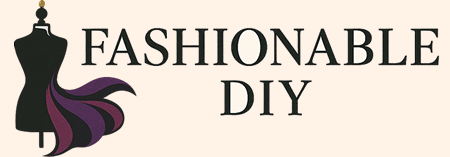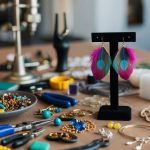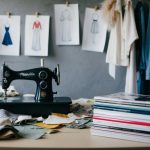The Ultimate DIY Guide to Making Your Own Fashion Patterns: Simple Steps to Get Started
Fitting and Adjustments
Creating well-fitting fashion patterns requires meticulous measurements and careful alterations.
Making a Mock-Up
Before cutting into our final fabric, it’s crucial to create a mock-up, often called a toile. This preliminary version helps identify fitting issues early. Using muslin or any inexpensive fabric, we construct a sample garment replicating the pattern. This step allows us to fine-tune areas like bust, waist, and shoulder fit without the risk of ruining expensive materials.
By sewing the mock-up, we can see how the garment drapes and fits the body. Important adjustments become evident, such as sleeve length and neckline shape. It’s especially useful for intricate designs, ensuring every dart, seam, and fold performs as expected.
Adjusting Patterns for a Perfect Fit
Once our mock-up reveals the necessary changes, we adjust the original pattern accordingly. Accurate measurements are fundamental. For the bust, we modify darts or princess seams to achieve the desired contour. The waist often requires changes at the side seams for a snug fit.
To address length adjustments, we measure from shoulder to waist and from waist to hem, making incremental corrections. For sleeves, we tweak the sleeve cap or adjust the length to match our arm measurements. Each change should be carefully noted and transferred to the pattern.
Combining these refinements, our final pattern becomes a true reflection of bespoke tailoring, ready for the final cut.
Advanced Techniques
Exploring advanced pattern-making techniques can significantly improve our garment designs. Let’s focus on mastering draping and understanding the role of grainlines and fold lines in our patterns.
Mastering Draping for Pattern Design
Draping is a technique where we work directly with fabric on a dress form to create patterns. This method allows for a hands-on approach, offering a three-dimensional perspective. Draping helps us visualize the flow and fit of the garment on a body, making it ideal for complex styles and unique designs.
We start by pinning the fabric to the form, creating basic shapes. Adjustments are made directly on the form, refining the lines and shapes, such as necklines, waistlines, and hems. This tactile process involves pinning, marking, and cutting as we fine-tune the design.
Once satisfied, we transfer these markings onto paper to create our final pattern. Draping requires practice and a good eye for detail, but it can yield precise and bespoke patterns that are hard to achieve through flat pattern methods alone.
Working With Grainlines and Fold Lines
Grainlines and fold lines are crucial in ensuring that our finished garments hang correctly on the body. Grainlines indicate the fabric’s direction, guiding us in aligning our patterns for optimum stability and drape.
We always align the grainline arrow on our pattern pieces parallel to the fabric’s selvage. This ensures that the fabric’s natural stretch and wearability are considered. Fold lines, on the other hand, are used in symmetrical garments. They mark where the fabric is folded to create mirrored pattern pieces, such as in bodices or sleeves.
Misalignment can result in skewed and ill-fitting garments, so precise placement is essential. Understanding how to work with these lines helps us enhance the garment’s overall finish and longevity, providing a professional finish to our DIY projects.
Adapting Commercial Patterns
We can easily tailor commercial sewing patterns to suit our personal style. By making customizations and blending these patterns with DIY designs, we can create unique and perfectly fitting garments.
Making Customizations
Commercial sewing patterns are a great starting point, but they often need tweaks to match our individual tastes. A common modification is changing the length of sleeves, hemlines, or pants. This not only ensures a better fit but also personalizes the garment.
We can also adjust the fit around the bust, waist, or hips by adding darts or pleating techniques. Removing or adding elements like pockets, collars, or trims can further tailor the design to our preference. Such changes may seem minor but they significantly impact the final look.
Using a muslin fabric for a test run helps identify additional adjustments needed. This test version can highlight areas requiring more modifications without wasting expensive fabric. It’s a crucial step to achieving the desired result.
Mixing and Matching Commercial and DIY Patterns
Another way to create unique garments is to blend commercial patterns with our custom designs. For instance, we might love the bodice of a commercial pattern but prefer a different skirt style we designed ourselves. Combining elements from different sources allows for endless creativity.
When mixing and matching, it’s important to ensure that the patterns align well at the seams. Accurate measurement and careful pattern tracing are keys to a seamless integration. We must also pay attention to fabric choice, ensuring compatibility in terms of stretch and drape.
By thoughtfully combining commercial and DIY elements, we can innovate beyond the limitations of store-bought designs. This method offers a balanced approach to creating personalized fashion without starting from scratch.



